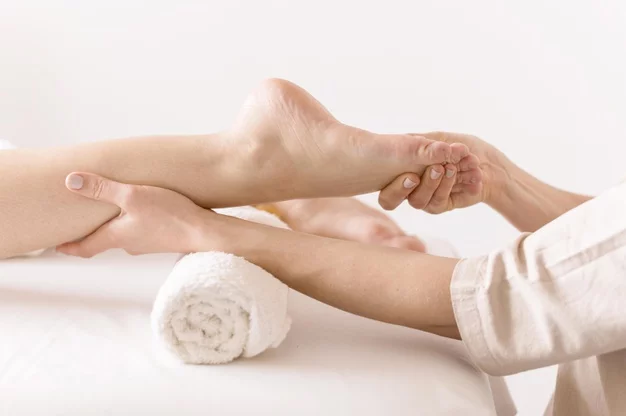More and more people are suffering from foot pain, and a large part of it is due to misdiagnosis of their issues. Often, people are told that the answer to their problems is to get expensive orthotics no matter what the foot problem might be. Although orthotics are useful for many situations, they are not a cure-all solution. The road to recovery involves careful consideration of how a foot injury occurred and the location of the pain.
Most people complain about pain either on the bottom, heel or outside of the foot. This pain is usually the result of stress on a section of tissue on the bottom of the foot called the plantar fascia, which runs from the Achilles tendon to the beginning of the toes. This connection to the Achilles plays a large role in foot pain, as it is also connected to the hamstrings and calf muscles, which are one of the most active muscle groups in the lower body. If any part of this system becomes tight, your legs and feet will not be operating properly, which can lead to a condition called plantar fasciitis, where your plantar fascia becomes irritated and inflamed.
Although under-supportive shoes can cause plantar fasciitis, you can have the same condition by wearing shoes that support you too much. Foot muscles that barely have to work to support the arches of your feet will eventually get lazy and weak, meaning they rely heavily on that supportive sole to hold up your body. With the loss of the muscles, it’s now on your plantar fascia to hold up your entire body weight, something it is not designed to do. It will gradually stretch, tear, become inflamed, and develop scar tissue. This is why some people will still complain of foot pain even with orthotics in place.
Simple foot injuries can cause a build-up effect of irritation over time and also result in plantar fasciitis. The sciatic nerve is also strongly connected to the foot, and irritation of the nerve can cause foot pain. This is why determining the direct cause of the pain is essential, because ignoring the greater issue will harshly reduce the chance that treatment is effective.
After determining the cause of your foot pain, directed massage therapy can be very effective as a treatment. A registered massage therapist will perform a quick assessment to help discover the reasons for your pain and will direct your efforts accordingly. The usual areas that directly cause plantar fasciitis include calf muscles, hamstrings, glutes, lower back, and the opposite leg. Massage therapy usually works best in conjunction with foot exercises, and your RMT can assist you in finding the right exercises for your needs.
If you think that you need a foot massage in the Winnipeg area, Prairie Sage Massage can help! Our RMTs are committed to providing the best care for our patients and are always looking to learn new ways to help! Give us a call or email, and book your appointment today!

Recent Comments